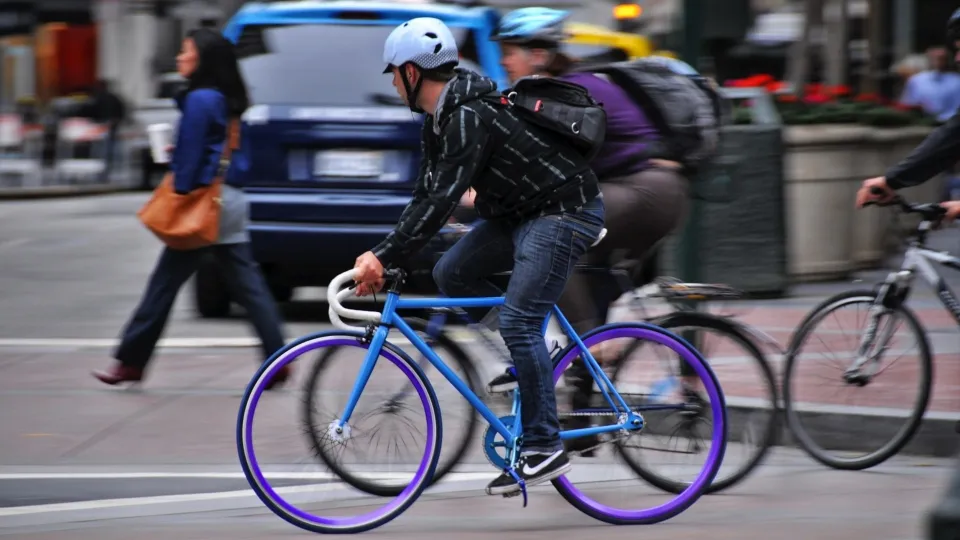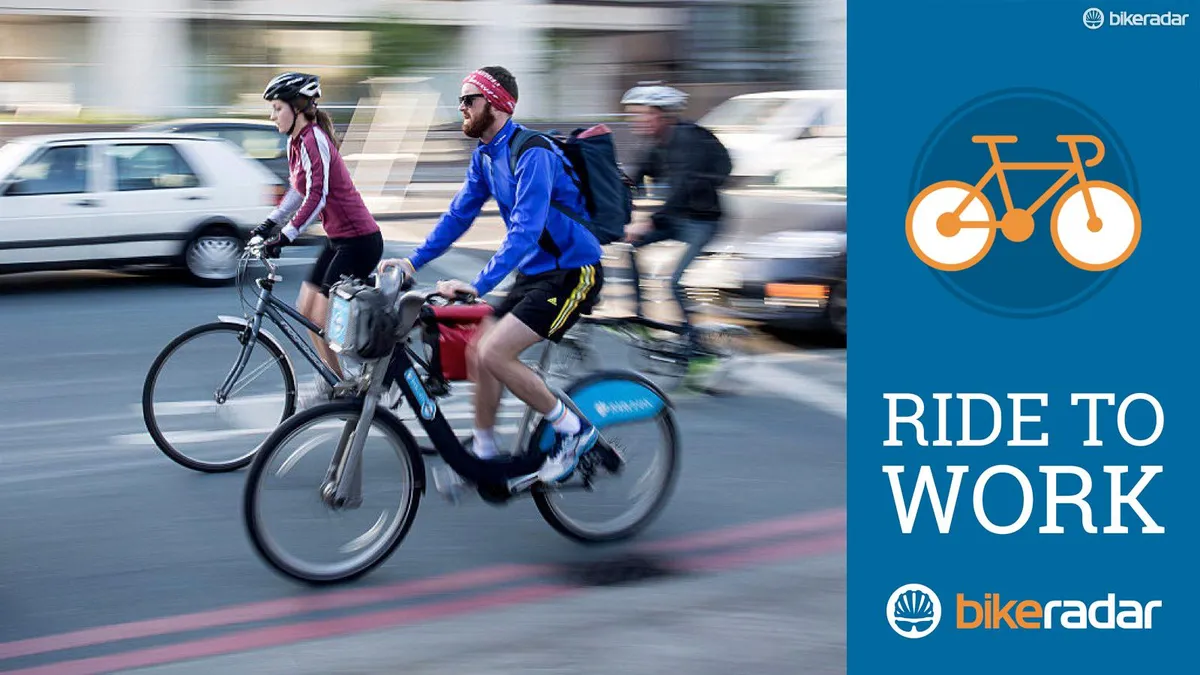Many people cite safety fears as the reason they wouldn't commute by bike, but millions of people do it safely every day. As long as you remember some basic strategies for how to ride safely in traffic, you should always arrive at your workplace with a smile on your face.
We asked cycling skills and safety consultant John Franklin to run through the basics of riding in traffic safely, from anticipating problems before they happen to assuming the safest position on the road and choosing the right kit.
- What's the best bike for cycle commuting?
- Best folding bike: buyer's guide and 8 of our recommendations
- 10 tips for safer city cycling
1. Anticipate problems before they arise

“Always expect the worst,” says Franklin, author of How to be a Better Cyclist and Cyclecraft. A cyclist’s emergency reaction time equates to a distance of 6m at 15mph and up to 10m at 25mph — and then if you have to stop, braking distances will have to be added to this too.
To keep your reaction time to the bare minimum, it's a good idea to cover the brakes with one or two fingers on busy roads, in towns and on descents.
2. Watch your surroundings like a hawk
Obviously this is a key component of anticipation, but you shouldn’t just be looking up the road; you should be scanning and assessing the road around you.
This includes watching the road itself for glass, potholes or slippy drain covers, plus parked cars, side roads and gaps in queuing traffic through which cars or pedestrians might appear. “Effective observation gives you time to plan ahead,” says Franklin.
Checking your blind spot over one shoulder or the other before you move in that direction is known to motorcyclists as a ‘life-saver’ for obvious reasons. For a longer, more in-depth assessment of the road behind, learn to take your right hand off the bar, sit up and turn to your right at the waist to look backwards.
Don’t just rely on your sense of hearing before changing road position — some ‘eco’ buses, for example, hardly make any noise at all at riding pace.
3. Claim the best road position

“Good positioning is about riding where you can best see and be seen and, if necessary, where you can deter or prevent others from putting you at risk,” says Franklin.
The ‘primary’ riding position is in the middle of the left-hand lane and should be used to emphasise your presence in the road to drivers behind, or to stop them overtaking where it isn’t safe.
Once it is safe, you should move back to the secondary position, about 1m to the left of the moving traffic lane. Don’t ride in the gutter, the ‘door zone’ close to parked cars, or up the inside of heavy goods vehicles or high-sided trucks at junctions.
4. Negotiate carefully with other road users
The Highway Code applies to all road users in the UK, and provides a framework of laws, rules and conventions so that vehicles can safely share the road.
Despite this, there still has to be constant non-verbal communication — or negotiation — between users, such as signalling. Don’t forget that all road users are also making constant judgements about your and other users’ intentions.
“You need to influence the positive actions of others to your best cycling advantage,” says Franklin. Road positioning, such as moving to the centre of the road to turn right, and even observation or eye contact — such as looking over your right shoulder before you overtake — are all powerful means of communicating your intentions.
5. Hone your riding skills

It goes without saying that your attention is best reserved for the road and the other traffic on it, rather than on how to ride your bike.
Basic skills such as being able to look over your shoulder without swerving, indicating, steering and braking confidently — and even changing down before stopping at lights — should all be second nature.
Above all, you need to be able to ride decisively and predictably so that other traffic knows what you’re doing.
6. Choose the right kit
Kit and bike choices can help you be a better and safer urban rider. Double-sided pedals for easy re-entry in stop-start traffic are more sensible than single-sided race pedals when you're first starting out, and if you’re not that flexible, it’s foolish to choose a riding position that makes it difficult to look up or behind you.
Likewise, you should always consider your visibility — or lack of it — when choosing kit, especially for a dark or twilight commute, for example.
Bike maintenance is important too: if your chain slips or even snaps in traffic, or if your brakes aren’t up to the job, you could put yourself in considerable danger.
- Sponsored: UK readers — can you go the extra mile this summer? By running or cycling to work you can be a part of Red Bull’s UK-wide Million Mile Commute. Join the club in Strava to be eligible for a Red Bull sample kit to set you on your way. Don’t forget to share your commutes by tagging @RedBullUk and use #MillionMileCommute
